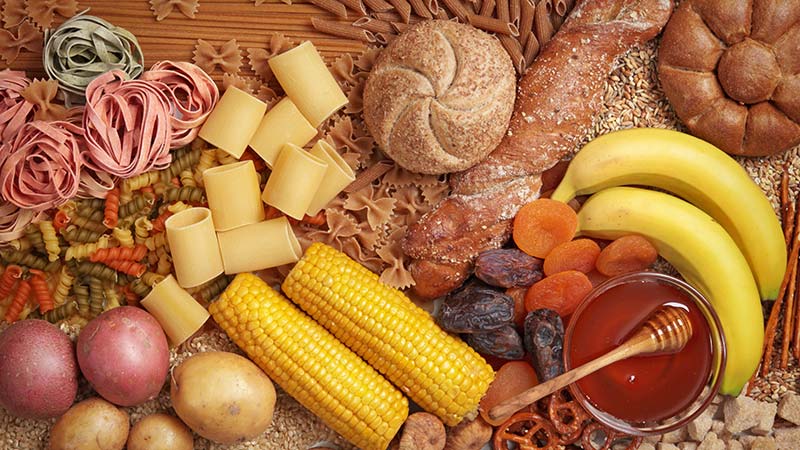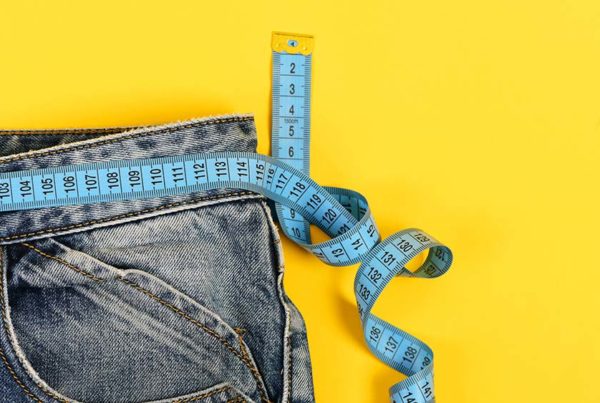
One of the most effective ways to quickly improve health and fitness is to determine your tolerance to carbohydrate foods. This can be personalized through the Two Week Test.
Carbohydrate intolerance, or CI, occurs when we consume more sugar, starch and other carbohydrates than tolerable. The result is we store large amounts of these foods as fat, and we are unable to burn stored fat for energy.
CI is also called insulin resistance, hyperinsulinemia and a full spectrum of other names and conditions associated with poor tolerance to carbohydrate foods, especially those that are processed, contain added sugars or are high glycemic. You can read more about the clinical science of this problem in the white paper linked at the end of this article.
CI typically produces symptoms such as fatigue and hunger, which increases cravings for sugar and other refined carbohydrates. Increased body fat is a common sign early in the process, with development of risk factors such as increased blood fats (cholesterol and triglycerides), unstable blood-sugar levels, chronic inflammation and high blood pressure. This can lead to metabolic syndrome, sleep apnea and other conditions, and often culminates in chronic diseases (such as diabetes, cancer, Alzheimer’s and cardiovascular disease), physical impairment and injuries, and the increased risk of infectious disease.
This article helps guide you through the process of individualizing your carbohydrate intake.
- First, take the survey (click here) to determine your risk for CI. This is important to determine in those who are not sure whether they are carbohydrate intolerant. If the survey results are moderate or high risk, proceed to performing the Two-Week Test.
- The most common sign associated with CI is excess body fat. If your waist measures more than half your height, skip the survey if you want and proceed to the Two-Week Keto Test, which may be more appropriate to begin the personalization process.
The Two-Week Test
This evaluation will help you personalize your diet by better understanding how carbohydrate-intolerant you may be. It must be emphasized that this is only a test and not a permanent diet — it will only last two weeks. It’s also important to avoid experiencing hunger during the test — you can eat as much of the non-carbohydrate foods as you want, and as often as necessary to not feel hungry. It is not the purpose of the Two-Week Test to restrict calories or fat. It merely restricts most carbohydrate foods.
For a period of two weeks, just eat as much as you want from what you’re allowed, and avoid what’s restricted.
Before the Two-Week Test
- Write down a list of your abnormal signs and symptoms. These may include hunger, mood, depression, high blood pressure*, insomnia, fatigue, increased weight/body fat), physical injuries and others.
- Weigh yourself before starting. This is the only instance I recommend using the scale for body weight — it’s not a measure of body fat, but it is a good pre/post evaluation. This weight may include excess water and body fat ).
- Always eat breakfast, including a liquid meal, within an hour of awakening. This may include Phil’s Fat-Burning Coffee (with egg, cream, coconut oil).
- Before you start, make sure you have on hand enough of the foods you’ll be eating (suggestions below.) Get rid of all sweets, foods containing them, all breads and products made from flour, and other items that may tempt you during the test.
- Schedule the test during a two-week period in which you are relatively unlikely to have distractions, such as holidays, parties, etc.
- Don’t worry about cholesterol, fat or calories, or the amount of food you’re eating. This is only a test.
- Eat as much and as often as necessary to never get hungry.
- After the test, re-evaluate your signs and symptoms, including weight.
During The Test: The Menu
YES Foods. You may eat as much of the following foods as you like during the Two-Week Test:
Plant Foods
- Tomato, onion, garlic, greens such as spinach, kale, chard and all lettuces, broccoli, cauliflower and Brussels sprouts, zucchini, etc.
- Tree nuts (and nut butters): Macadamia, almond, walnut, for example. (Does NOT include peanuts or cashews).
- Coconut: oil, cream, milk and flour.
Animal Foods
- Meats: Beef, turkey, lamb, pork, other natural meats.
- Fish: Wild-caught cold water fish such as salmon.
- Shellfish.
- Whole eggs.
Dairy
- Unprocessed natural cheeses: Swiss, brie, Jarlsberg, parmesan, etc.
- Cream: heavy cream, sour cream, butter (unsalted), full-fat crème fraiche.
Other fats
- Oils: avocado, coconut and olive oil.
Drinks
- Vegetable juice.
- Coffee or tea, if you usually drink it.
- Vinegar: balsamic, apple-cider, etc.
- Alcohol: dry red wine, pure distilled spirits such as gin, vodka and whiskey.
Click here for some meal ideas and recipes for use during the Two-Week Test.
NO foods. Avoid all of the following foods during the Two-Week Test:
- All sugar and sugar-containing products: Includes basically anything with honey, sugar, agave, fructose, cane sugar, or syrup in its ingredient list.
- Sweets and desserts: cake, cookies, ice cream, muffins, candy, gum, breath mints.
- All non-caloric artificial and so-called “natural” sweeteners, including stevia.
- Many canned and prepared fruits and veggies contain sugar or starch. Read the labels!
- All bread, muffins, rolls and product made with flour (whole-grain, multi-grain, flaxseed, rye, gluten-free, etc).
- All products made from corn and corn flour, including tortillas.
- All pasta.
- All snacks: crackers, chips, rice cakes, etc.
- Energy bars and sports drinks.
- Ketchup, mayo and other sauces and condiments. These often contain hidden sugars.
- Rice: wild, brown, white, basmati, etc.
- All other wheat and wheat products: whole wheat, farro, bulgur, khorasan, millet, etc.
- All other grains: millet, quinoa, etc.
- All potatoes.
- All fruits and berries.
- All legumes: beans, lentils, peas, chickpeas, peanuts, etc.
MEAT
- Processed meats: sausage, pastrami, salami, pepperoni, and deli meats.
- Smoked products: Jerky (beef, buffalo, etc), smoked fish.
- Canned and prepared meats. Many contain hidden sugars or starch.
DAIRY
- Milk: low-fat, non-fat milk, half-and-half.
- Yogurt and kefir.
- Processed cheeses: American, pre-sliced, single-serving, pre-shredded products.
FATS
- Avoid corn, safflower, soy, peanut or canola oils.
DRINKS
- All fruit juice.
- All soda: diet and non-diet soda.
- All diet drinks: Diet shakes, etc.
- “Enhanced” Beverages: vitamin water, mineral water with “health” additives.
- Sports drinks.
- Sweet and white wines: including liqueur, Champagne, rum, etc.
If it comes in a box, bag, jar or can, there’s a good chance it contains sugar or starch!
After the Test
Once you are done with the Two-Week Test, click here to read about the key follow-up guidelines. These will help you determine which natural carbohydrate foods are healthy for you, i.e., without experiencing a return of the signs and symptoms of carbohydrate intolerance.
* If your blood pressure is elevated, especially if you’re taking medication to lower it, it’s important to tell your health practitioner to monitor it during the test as reducing carbohydrates could lower blood pressure.








